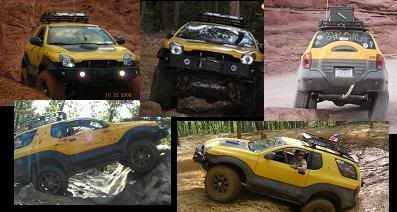The most effective way I've found to remove the dents in the plastic bumpers is a three step process...
First, I use a curing lamp (that mobile painters use) to heat the damage and surrounding area. The heat from the lamp softens a large enough area for pushing the bulk of the damage out. When you heat a larger area, it allows more of the pressure and crowning to dissipate as it softens the plastic. With the larger surface area heated and pliable, there is less pressure required to move large or deep damage. Before you push, evaluate the shape of the dent to try to determine where the bulk of the pressure is being held. This should be your first push once the temperature is appropriate. With the painted surface properly heated, the paint has less chance of "spidering" due to its pliability.
Second, I use a heat gun for directed heat on remaining crowns and lows and work each part of the deformation just like a normal (metal) dent. The most important part of this is to partially quench each area as you work the deformations out. I use a block of aluminum that I have made into a dolly. The aluminum dissipates the heat quickly, but only enough to "pin" the repair into place. (The dolly also comes in useful as a prying instrument on larger, flatter deformations.)
You can get close to the same cooling effect by keeping a damp cloth nearby and lightly water quenching the specific area you work. The problem with using the damp cloth is the possibility of damaging the paint while it is hot. If the surface is really hot the cloth will leave an impression of its texture on the paint surface. The best way to quench with the rag is to work from the back of the panel.
Lastly, Let the area start to cool. Once the paint is cool enough to not be damaged, a full water quench on the entire surface will stabilize the plastic and solidify the repair.



 Reply With Quote
Reply With Quote
















